How Do Lupus Mouth Sores Look? A Complete Visual Guide
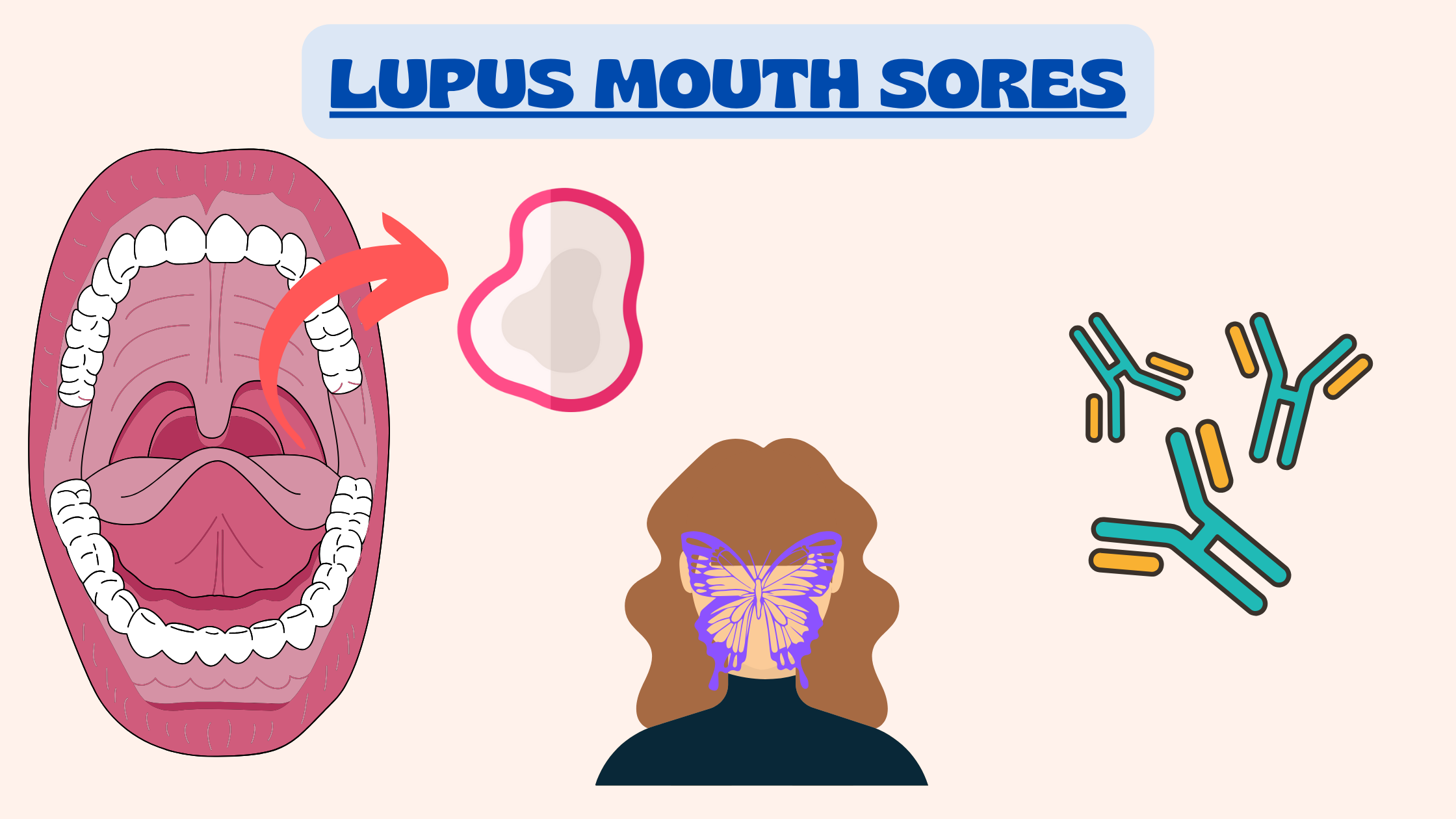
It triggers the production of specific antibodies called antinuclear antibodies that attack the body’s own tissues—including the skin, organs, and the lining of the mouth.
When it comes to lupus (and many autoimmune diseases), the mouth often acts like a “mirror of the body”—sometimes showing the first early warning signs.
In this article, we’ll explore how lupus can affect your mouth, what the sores typically look like, and other symptoms that commonly show up alongside them.
In this article...
1. How Does Lupus Affect the Mouth?
2. What Do Lupus Mouth Sores Look Like?
3. Other Common Mouth Manifestations of Lupus
How Does Lupus Affect the Mouth?
Mouth sores or oral ulcers are one of the 11 diagnostic criteria set by the American College of Rheumatology for identifying lupus.Although the exact cause of how lupus damages the mouth’s inner lining (and other organs) isn’t fully understood, it's believed that certain antibodies mistakenly attack the tissues. This immune response leads to changes in the oral lining, causing the typical sores and the red or white patches often seen in people with lupus.
There are two main types of lupus: Systemic Lupus Erythematosus (SLE) and Cutaneous Lupus Erythematosus (CLE).
SLE is the most common form, and it affects the mouth in about 40% of cases. It doesn’t stop at the mouth and skin—it can also impact vital organs like the lungs, kidneys, joints, and heart.
CLE mainly affects the skin, but in around 20% of cases, it can also cause changes inside the mouth.
Key Facts About Lupus
- Lupus is much more common in women than men (9:1 ratio).
- It’s usually diagnosed between ages 15 and 45.
- A butterfly-shaped rash on the cheeks and nose is a classic sign.
- Symptoms often come and go in flares and remissions.
What Do Lupus Mouth Sores Look Like?
Lupus can show up in many ways inside the mouth, and in some cases, mouth sores might be one of the first signs of the disease.These sores don’t always look the same. They can vary in shape, size, and color depending on the type and severity of lupus. Some are specific to active lupus, while others might look like common canker sores or fever blisters.
Lupus sores can appear anywhere in the mouth—including the inside of the cheeks and lips, the tongue, the roof of the mouth, or the gums. They may or may not be painful or cause discomfort.
Here are some of the most common signs of lupus-related mouth sores:
Mouth Ulcers That Look Like Canker Sores
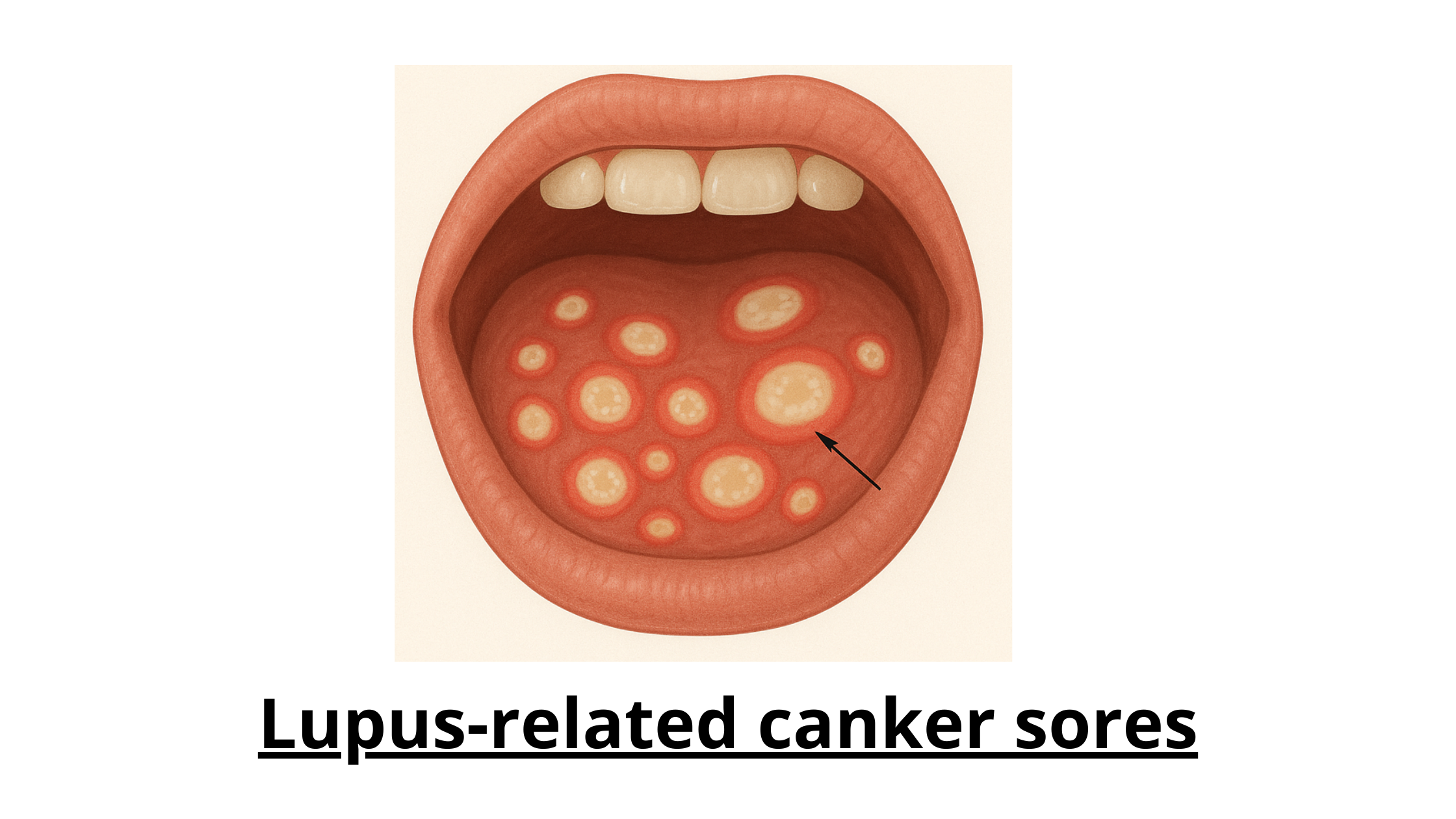 Canker sores are small ulcers that appear white or yellow with a red border. They’re common and can affect anyone—even people without any health issues. But in those with lupus, these sores tend to show up more often and in greater numbers.
Canker sores are small ulcers that appear white or yellow with a red border. They’re common and can affect anyone—even people without any health issues. But in those with lupus, these sores tend to show up more often and in greater numbers.
It’s not unusual for several sores to appear at once, ranging in size from just a few millimeters to over a centimeter (0.04–0.4 inches). When they do appear, they’re often very painful—especially when eating hot, sour, or spicy foods.
Discoid-Type Mouth Lesions (White Border with Red Center)
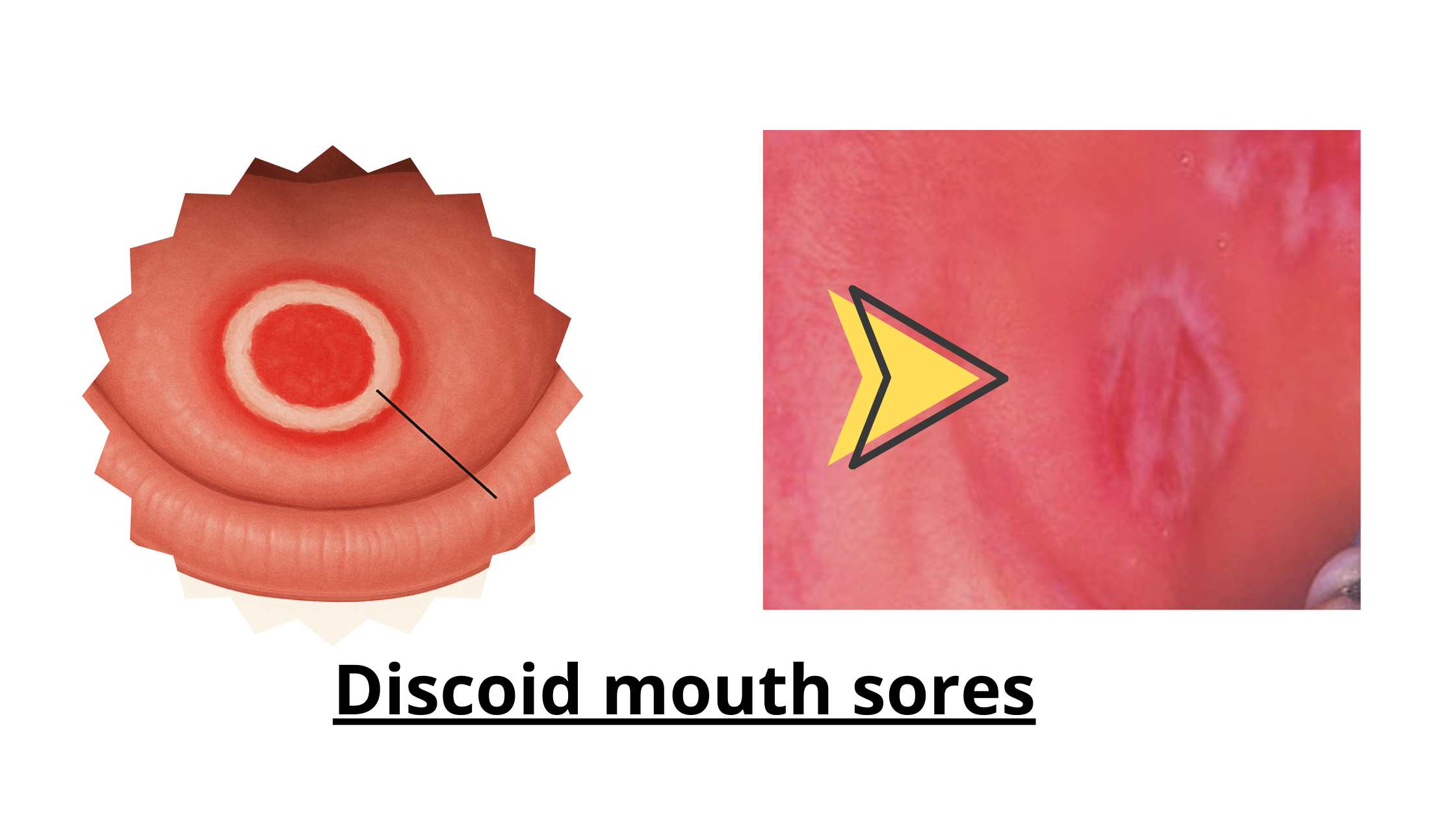 One of the most specific signs of lupus in the mouth is the discoid lesion, named for its round, disc-like shape. These sores are considered a strong indicator of a lupus flare-up.
One of the most specific signs of lupus in the mouth is the discoid lesion, named for its round, disc-like shape. These sores are considered a strong indicator of a lupus flare-up.
Unlike canker sores—which have a white center with a red border—discoid sores show the opposite pattern: a red center surrounded by a white rim.
They usually begin as a small spot and gradually expand. As the white plaque grows, the middle turns red while the outer edge stays white.
These lesions can appear anywhere on the lining of the mouth, but the roof of the mouth (palate) is one of the most common and characteristic locations.
Discoid sores are often painless at first. However, if an ulcer forms in the center (which often happens), the area can become painful.
White Patches
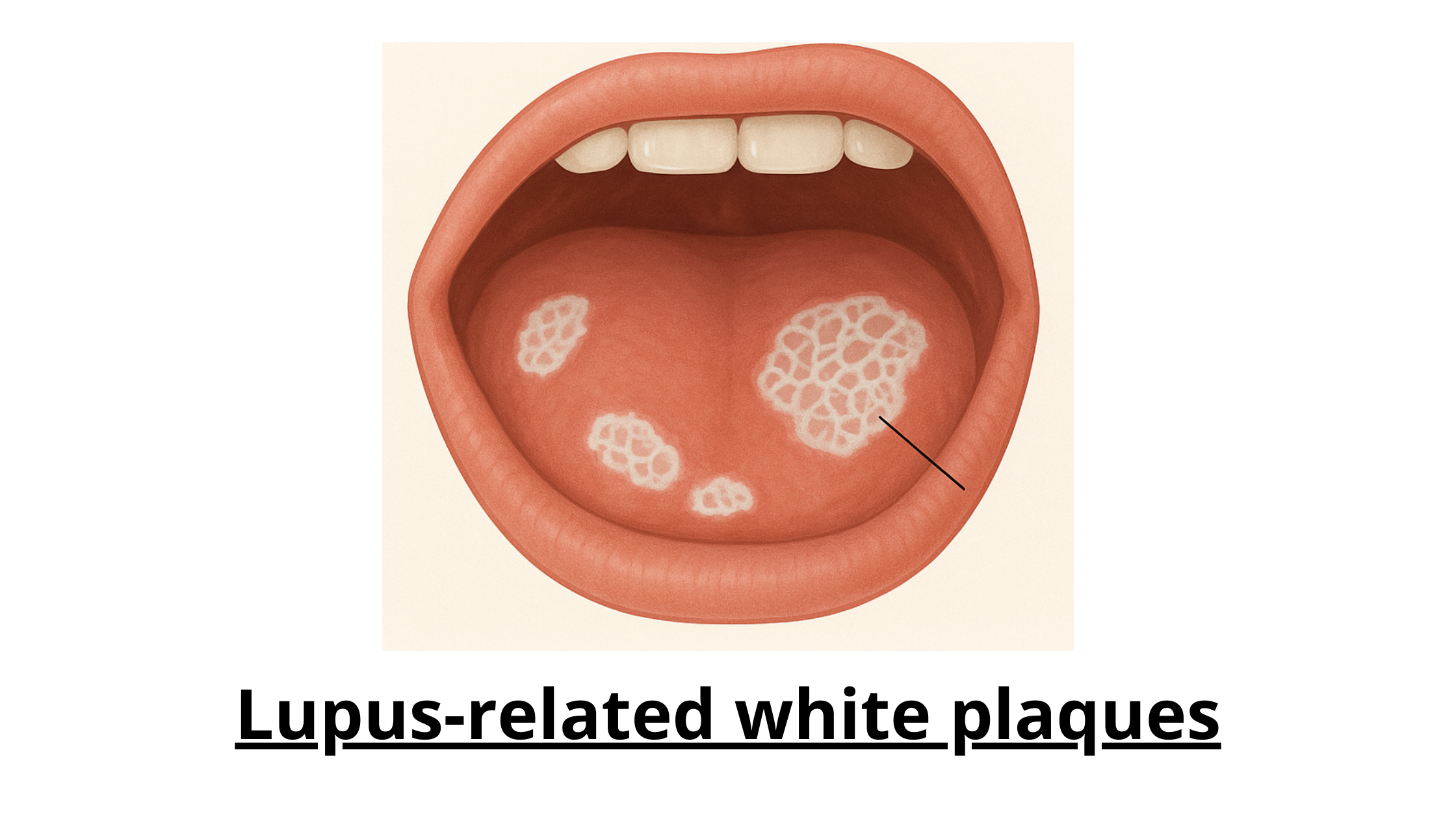 White patches with a lace-like pattern or small white spots with slightly raised edges are also common signs of lupus in the mouth. These patches can appear anywhere inside the mouth—including the lips, cheeks, roof of the mouth, and gums.
White patches with a lace-like pattern or small white spots with slightly raised edges are also common signs of lupus in the mouth. These patches can appear anywhere inside the mouth—including the lips, cheeks, roof of the mouth, and gums.
They are often surrounded by redness and inflammation. Sometimes, these patches cause no symptoms at all, but they can also lead to pain or a burning sensation.
Lupus Mouth Sores Treatment
Mouth sores caused by lupus usually get better on their own during remission periods or with treatment. Treatment often includes using an antiseptic mouthwash along with a topical steroid applied 2 to 4 times a day.
Although usually harmless, some studies have found a small risk that lupus mouth lesions can develop into squamous cell carcinoma, a type of oral cancer. That’s why it’s important to monitor these sores closely and ensure they heal completely.
Other Common Mouth Manifestations of Lupus
Systemic lupus erythematosus doesn’t just affect the skin and mouth lining. It can also involve other tissues and organs, such as the joints, glands (like saliva-producing glands), and the nervous system.So, beyond mouth sores and ulcers, lupus can cause other symptoms in the mouth. The most common ones are:
Dry Mouth
Many people with lupus say things like, “My mouth and lips feel dry,” “I have trouble eating and swallowing,” or “My mouth gets drier during meals.”
Studies show that up to 80% of lupus patients experience dry mouth. This happens because the salivary glands don’t work properly—either because lupus affects the glands directly or as a side effect of certain medications.
Common signs of dry mouth include cracks and fissures on the tongue and lips, a sticky or glassy feeling inside the mouth, low saliva with a foamy texture, a burning sensation, loss of taste, and bad breath.
Since saliva is important for cleaning and protecting the mouth and teeth, having a dry mouth increases the risk of cavities, gum disease, and oral infections. This risk is even higher if patients take corticosteroids or immunosuppressants that weaken the immune system.
Lupus Cheilitis (Lip Inflammation)
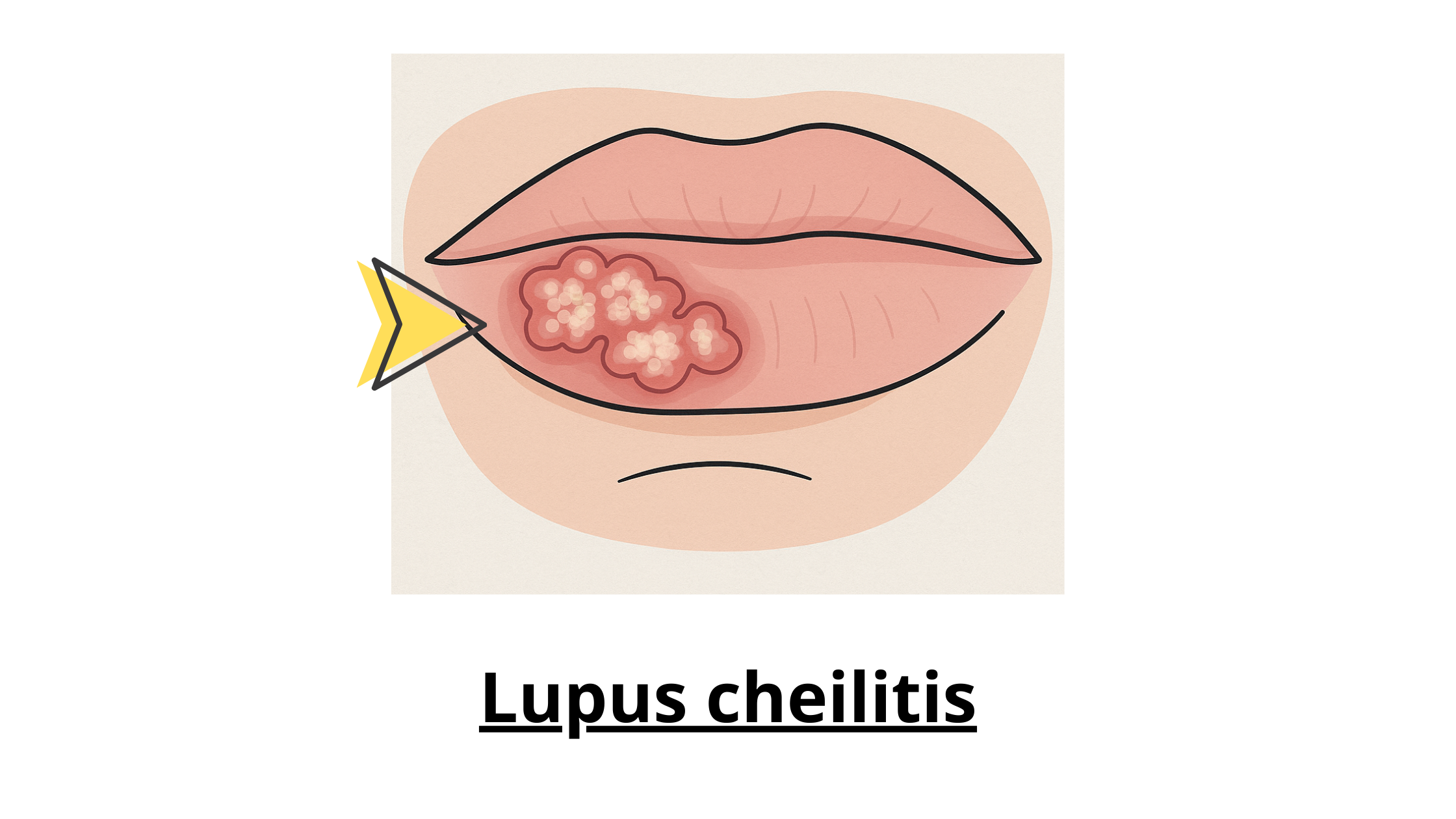 Lupus cheilitis is inflammation that affects the outer, visible part of the lips—most often the lower lip. It can appear as white or red scaly patches, blisters, or ulcers. Sunlight exposure may trigger or worsen this, since many people with lupus are sensitive to the sun.
Another type is called angular cheilitis, which affects the corners of the mouth where the upper and lower lips meet.
Lupus cheilitis is inflammation that affects the outer, visible part of the lips—most often the lower lip. It can appear as white or red scaly patches, blisters, or ulcers. Sunlight exposure may trigger or worsen this, since many people with lupus are sensitive to the sun.
Another type is called angular cheilitis, which affects the corners of the mouth where the upper and lower lips meet.
Angular cheilitis isn’t caused directly by lupus itself but often results from medications that disrupt the balance of microbes in the mouth. This allows a yeast called Candida albicans to grow too much, causing a fungal infection at the mouth corners.
Symptoms of angular cheilitis include redness, cracking, scaling, and sores at the corners of the mouth.
Temporomandibular Disorders (TMD)
Arthritis, or joint inflammation, is a common feature of lupus according to the American College of Rheumatology. About 95% of people with lupus develop some form of arthritis, and the temporomandibular joints (TMJ) are no exception.
The TMJ are the joints that connect your lower jaw to your skull. When these joints or the surrounding muscles become inflamed or damaged, it can cause temporomandibular disorders (TMD).
Ongoing inflammation can gradually wear down the bone and cartilage in the joint, leading to symptoms such as:
- Difficulty or limited ability to open the mouth
- Clicking or popping noises when opening the mouth
- Pain in the jaw joints and muscles, especially around the temples
Sources
- The Mouth and Lupus
- The prevalence of oral mucosal lesions and related factors in systemic lupus erythematosus patients | Arthritis Research & Therapy
- Orofacial manifestations and dental management of systemic lupus erythematosus: A review
- Temporomandibular Disorders and Oral Features in Systemic Lupus Erythematosus Patients: An Observational Study of Symptoms and Signs - PMC
- What Are the 11 Criteria for Lupus?
- Risk and prevalence of oral cancer in patients with different types of lupus erythematosus: a systematic review and meta-analysis - ScienceDirect